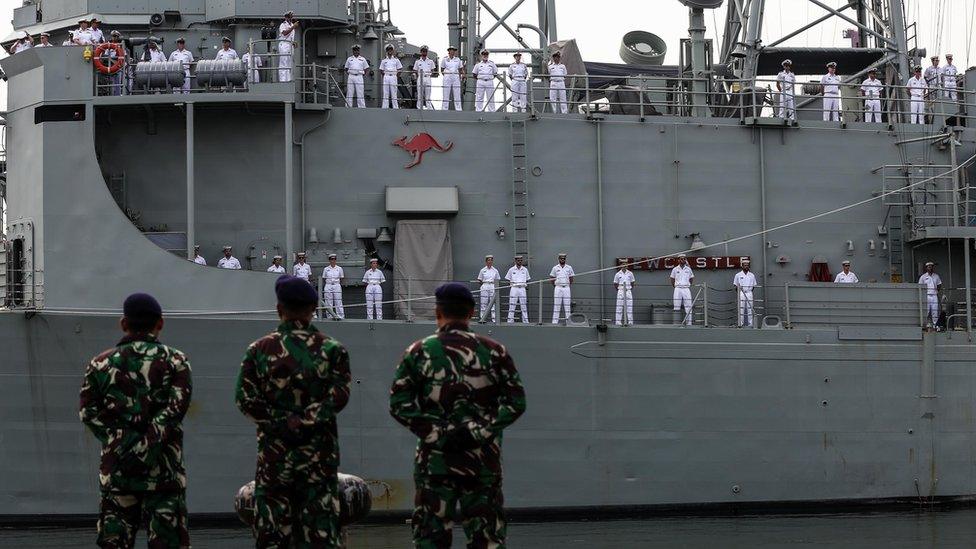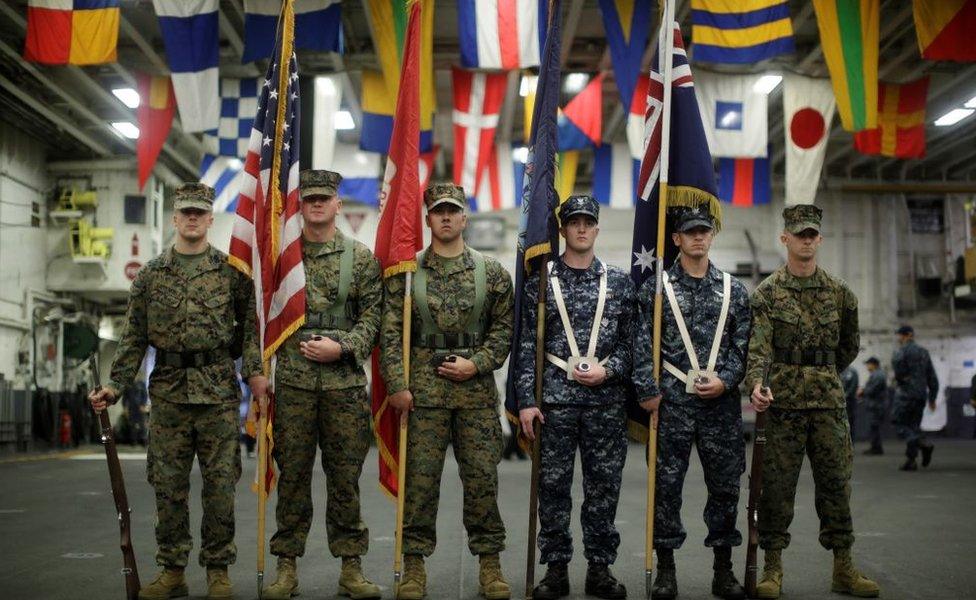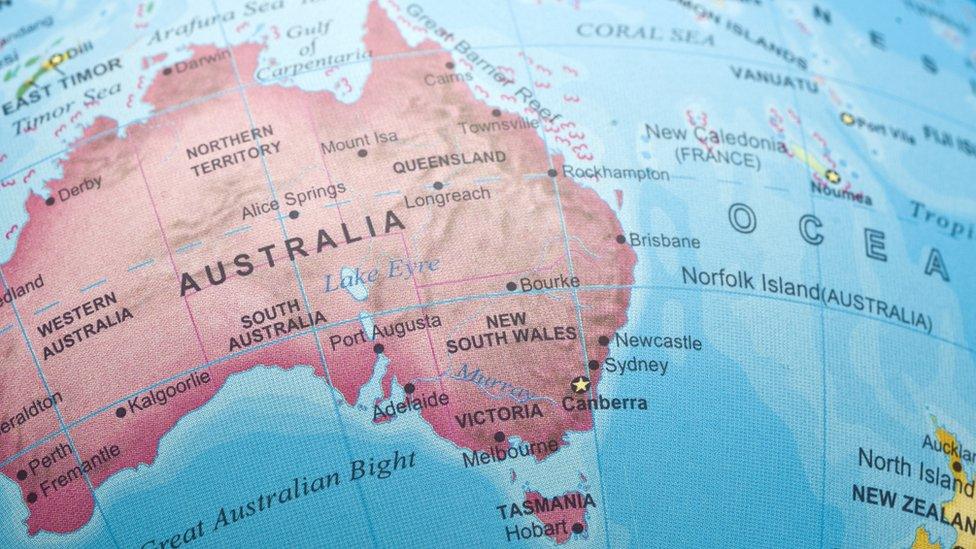Australia seeks long-range missiles in Indo-Pacific defence shift
- Published

Australia's naval operations will be focused more on its region
Australia says it will significantly increase military spending and focus on the Indo-Pacific region amid rising tensions between the US and China.
PM Scott Morrison pledged A$270bn (£150bn; $186bn) to Australia's arms budget over 10 years - a 40% boost.
He said Australia would acquire long-range missiles and other capabilities to "deter" future conflicts.
It was necessary because the region was the "focus of the dominant global contest of our age", he added.
Mr Morrison named several areas of tension including the border between India and China, and conflict over the South China Sea and East China Sea.
It follows deteriorating relations between Australia and China - which are widely seen to be at their worst in decades.
What is Australia spending money on?
The new defence capability budget - about 2% of GDP - replaces a previous decade-long strategy, set only in 2016, which had set aside A$195bn.
Mr Morrison said much spending would go to upgrading arms and equipment.
Australia will purchase from the US Navy up to 200 long-range anti-ship missiles, which can travel up to 370km (229 miles). It will also invest in developing a hypersonic weapons system - missiles which can travel thousands of kilometres.
Up to A$15b would be spent on cyber warfare tools - which the prime minister noted "says a lot about where the threats are coming from".
Last month, he warned that Australian institutions and businesses were being targeted by cyber attacks from a "sophisticated state actor". The remarks were broadly interpreted as aimed at China.
Why does Morrison say this is necessary?
He said tensions between the US and China had accelerated in recent years and their relations now were "fractious at best".
The pandemic had worsened these tensions and put the global security order at its most unstable point in decades. The region was also seeing "military modernisation" at an unprecedented rate, he said.
"The largely benign security environment... that Australia has enjoyed, basically from the fall of the Berlin Wall to the global financial crisis, that's gone," he said.
"The risk of miscalculation - and even conflict- is heightening."
He said Australia would vigorously defend its democratic values and those of others in the region, adding that increasing military capabilities would help "to prevent war".
Under the 2016 strategy, military priorities had been split equally across that region but also on operations with Western allies, such as US-led missions in the Middle East.
What's been the reaction?
The Labor opposition has welcomed the change in strategy, saying it had long called for greater military focus on the region.
Analysts say the change shows Australia is trying to be strong in its own region and on its own resources.
"There's a great emphasis, implicitly, in Mr Morrison's speech, in recognising the rise of China and also that America may not be as big a help as it has been in previous years," said Sam Roggeveen from the Lowy Institute.

US and Australian navy personnel mark a joint military exercise in the Pacific Ocean in 2017
Many have also interpreted the shift as Australia taking a more defined opposition to China's increasing influence in the region.
Relations with its biggest trading partner have further deteriorated in recent months, following Australia's push for a global probe into the origins of the Covid-19 virus.
- Published8 November 2018
